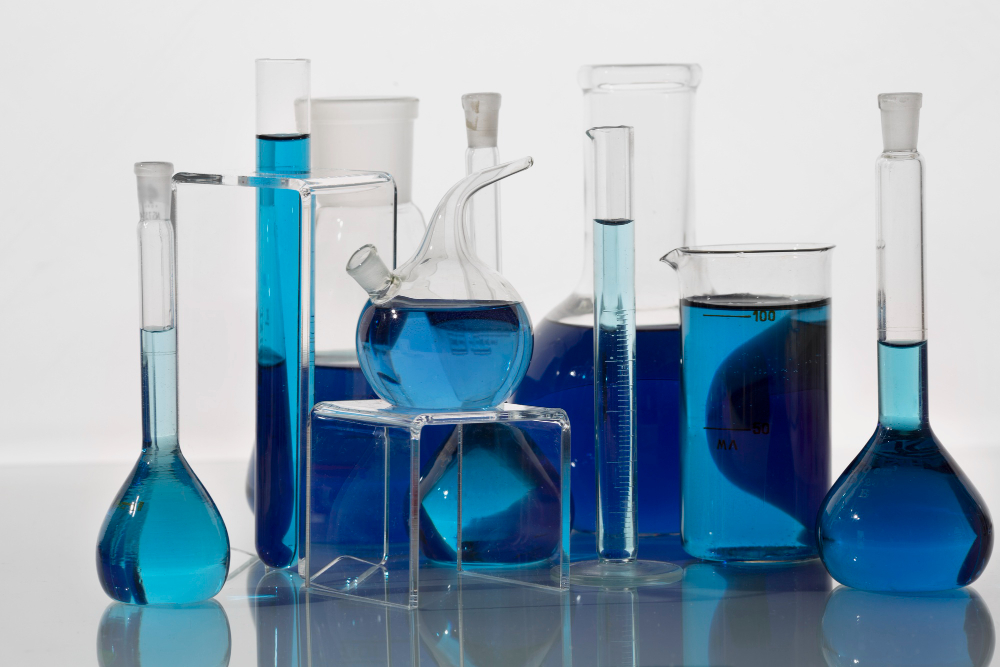Chemistry is often regarded as the central science, bridging the gap between physics and biology. For students diving into AP Chemistry, the world of chemical theories and models opens up fascinating insights into how substances interact, behave, and transform. This article aims to demystify these concepts and highlight their importance in everyday life.
What is AP Chemistry?
AP Chemistry is a college-level course offered in high schools, designed to give students a deep understanding of chemical concepts. The curriculum covers a wide array of topics, from basic principles to complex theories, preparing students for college-level chemistry. But why should anyone care about it? Imagine being able to understand the reactions in a cooking recipe or the science behind a battery powering your smartphone. That’s the power of chemistry!
Importance of Chemical Theories
Why do we need chemical theories? Theories are like the frameworks of a building. Without them, we wouldn’t have a solid structure to support our understanding. In chemistry, theories help explain observations and predict future outcomes. For example, when we mix baking soda and vinegar, a chemical reaction occurs, producing carbon dioxide. Understanding why and how that happens is where theories come into play!
The Atomic Theory
The Atomic Theory, proposed by scientists like John Dalton and later refined by others, suggests that all matter is composed of tiny, indivisible particles called atoms. Think of atoms as LEGO blocks; they combine in different ways to create everything around us. The theory has evolved, incorporating insights about subatomic particles like protons, neutrons, and electrons, reshaping our understanding of chemical reactions and bonding.
Molecular Models
Molecular models are vital for visualising the structure and behaviour of molecules. Just as a map helps you navigate a city, molecular models help chemists predict how substances will interact. There are various types of models, such as ball-and-stick and space-filling models, each providing unique insights into the molecular structure and its properties.
The Law of Conservation of Mass
One of the fundamental concepts in chemistry is the Law of Conservation of Mass, which states that mass is neither created nor destroyed in a chemical reaction. Imagine baking a cake; the ingredients you start with will equal the cake’s weight once baked, minus any lost moisture. This principle is crucial in balancing chemical equations and understanding reaction yields.
The Periodic Table and Chemical Behaviour
The Periodic Table is more than just a list of elements; it’s a systematic arrangement that reflects the periodic trends in their properties. Elements are grouped based on similarities, which helps predict their behaviour in reactions. For instance, sodium (Na) and potassium (K) behave similarly due to their positions in the same group, which leads to exciting chemical interactions.
Chemical Bonding Theories
Understanding how atoms bond to form molecules is essential in AP Chemistry. Various theories, like Valence Bond Theory and Molecular Orbital Theory, describe how atoms share or transfer electrons. Think of chemical bonds as friendships; atoms will “hang out” with others to achieve stability, much like people form relationships to feel secure.
Kinetic Molecular Theory
The Kinetic Molecular Theory provides insight into the behaviour of gases. It posits that gas particles are in constant motion and that this motion influences temperature and pressure. Imagine a crowded dance floor; the more energetic the dancers (particles), the more chaotic the floor becomes (higher pressure). This theory helps explain gas laws, like Boyle’s Law and Charles’s Law.
Thermodynamics in Chemistry
Thermodynamics studies energy changes in chemical reactions. It’s like managing your household energy usage; understanding how much energy is needed or released during a process can help optimise efficiency. Concepts like enthalpy, entropy, and Gibbs free energy are essential for predicting the spontaneity of reactions.
Equilibrium and Reaction Rates
Chemical equilibrium occurs when the rates of forward and reverse reactions are equal. It’s like a seesaw; when balanced, it stays still. Factors such as concentration, temperature, and pressure can shift this balance, affecting how quickly reactions occur. This understanding is vital for fields like pharmacology, where reaction rates influence drug efficacy.
Acids, Bases, and pH
Understanding acids and bases is another critical aspect of AP Chemistry. The pH scale measures how acidic or basic a solution is, influencing chemical reactions and biological processes. Think of pH as a taste test for your drink; a pH of 7 is neutral (like pure water), while lower values indicate acidity (like lemon juice) and higher values indicate basicity (like baking soda).
Applications of AP Chemistry in Real Life
AP Chemistry isn’t just confined to the classroom. Its principles are everywhere! From developing new materials to understanding environmental changes, chemistry plays a vital role in our lives. For example, understanding the chemistry behind cleaning products can help us choose safer and more effective options for our homes.
Challenges in Learning AP Chemistry
Learning AP Chemistry can be daunting. The volume of information and the complexity of concepts may overwhelm students. However, with effective study strategies and a positive mindset, anyone can master the material. Seeking help from teachers, forming study groups, and using online resources can significantly improve understanding.
Future of Chemical Science
The future of chemistry holds exciting possibilities! Innovations in materials science, energy solutions, and medicine are driven by chemistry. As we face global challenges like climate change, chemists will be at the forefront, developing sustainable solutions that benefit society. This dynamic field continues to evolve, making it an exciting time to study chemistry.
Conclusion and Key Takeaways
AP Chemistry opens doors to understanding the world around us, from the smallest atoms to complex reactions. By grasping chemical theories and models, students not only prepare for exams but also gain valuable knowledge that impacts their everyday lives. Whether it’s cooking, cleaning, or simply appreciating the science behind our environment, the principles of chemistry are foundational to our understanding of the universe.
FAQs
- What topics are covered in AP Chemistry?
AP Chemistry covers a wide range of topics, including atomic structure, chemical reactions, thermodynamics, and equilibrium. - Is AP Chemistry difficult?
It can be challenging due to the volume of content and concepts involved, but with dedication and good study habits, it is manageable. - How is AP Chemistry beneficial for students?
It provides a strong foundation in chemical principles, prepares students for college-level coursework, and enhances critical thinking skills. - Can I take AP Chemistry without prior chemistry knowledge?
While prior knowledge can be helpful, many students succeed in AP Chemistry with a strong interest and commitment to learning. - What resources are available for studying AP Chemistry?
Numerous resources are available, including textbooks, online tutorials, study groups, and practice exams to help reinforce learning.



